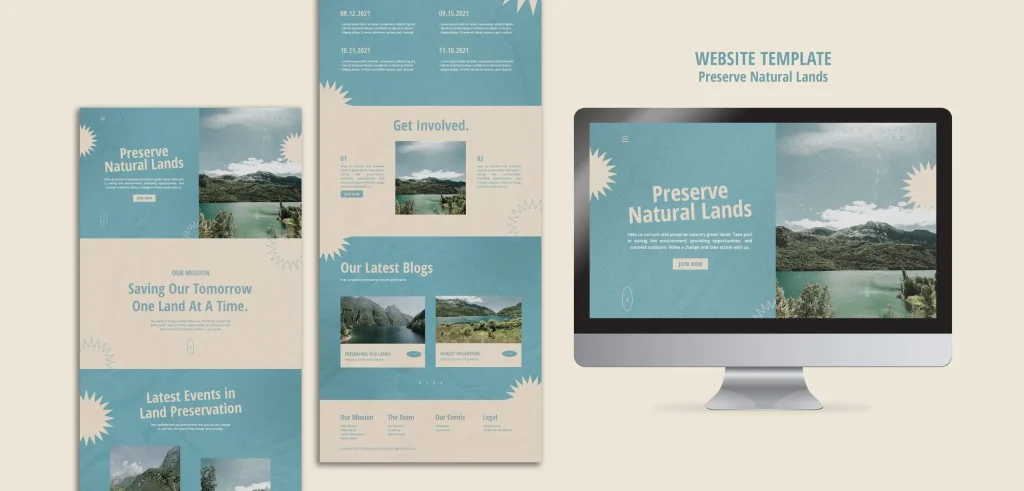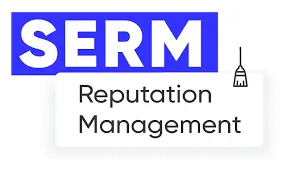Современные компании в Ташкенте, независимо от их масштаба, хоть раз задумывались о создании или изменении брендбука или гайдлайна, чтобы соответствовать мировым трендам и провести успешный ребрендинг, т.е. изменение брендбука компании: от самого бренда и фирменного стиля, до изменений самого продукта.
Термины «брендбук» и «гайдлайн» знакомы многим, но иногда их значения сбивают с толку. Давайте разберемся в каждом из них и рассмотрим, можно ли создать это самостоятельно, учитывая потребности вашей компании в Ташкенте.
Брендбук или гайдлайн?
Брендбук иначе называется «книга бренда» и берет свое начало от английских слов «brand» — «бренд» и «book» — «книга». Книга бренда объединяет в себе все, что связано с компанией: от ее истоков до планов развития на будущее.
Чаще всего брендбуки крупных компаний мирового уровня достаточно большие содержат детальную информацию. Фирмы меньшего уровня создают простые брендбуки или обходятся описанием фирменного стиля. Можно назвать брендбук своего рода инструкцией, фирменной настольной книгой компании.
На просторах интернета можно встретить достаточное количество разъяснения термина. Несмотря на различия, есть общие сходства и общие черты:
- Очевидно, что данное руководство детально описывает историю, миссию, ценности, корпоративную культуру, систему обслуживания клиентов компании, стремление двигаться вперед и развиваться;
- Фирменный стиль тщательно описывается. Нельзя упускать ни одной детали фирменного стиля, связанной с цветами, логотипом, шрифтами;
- Создание проработанного и детального описания позволяет организации выделиться на фоне конкурентов;
- Проработанный визуальный фирменный стиль должен ассоциироваться у каждого живущего на планете с указанным брендом;
- Расширенное описание аудитории, язык общения, иначе говоря, tone of voice, стиль написания статей, брендлайна и так далее.

Все, что связано с брендом, фиксируется и используется внутри компании. Информация, указанная в брендбуке, словно инструкция и заметки, к которым компания прибегает неоднократно в течение существования.
Фирменный стиль или гайдлайн (guidline дословно можно перевести как «ведущая/направляющая линия») — одно и то же.
Действительно, направления описываются и указываются детально.
Если миссии, ценности, стратегия развития и прочее организация может не раскрывать потенциальным заказчикам, то фирменный стиль скрыть не получится. Почему? Потому что в нем указываются правила того, что и как нужно делать при создании логотипа, печатной продукции, продукции на канцтоварах, оформлении социальных сетей и много другого. Он для дизайнеров — путеводная звезда, ведущая к задуманному. Давайте, рассмотрим детально, что именно входит в guideline.
В основном описаны:
- Использование и написание названия компании, в том числе и верное произношение. Здесь указывается также, можно ли писать буквы строчными, крупными, буквы разного кегля, размер шрифта, шрифт, написание с кавычками или без. Еще один важный нюанс: написание названия на кириллице, латинице;
- Логотип. Лого — важный элемент узнаваемости. Он должен быть уникальным, легко запоминающимся и ассоциируются только с конкретной компанией. Тщательная проработка приводит к большому успеху. Создать лого не так и просто. Часто разработка стоит дорого и требует немало времени, но оно того стоит. Фирменный стиль помогает дизайнерам легче и быстрее работать с готовым цифровым продуктом и использовать в различных материалах в соответствии с указанными цветами, шрифтами, размерами, отступами, размерами. В качестве примера можно привести небольшие брошюры или визитки. Для каждого печатного документа прописывают условия размещения лого. Например, на брошюре он может быть размером 30 мм и располагаться в правом углу, иметь отступы по бокам 0.5 см; для визиток — 15 мм, расположение слева или по середине с отступами со всех сторон по 35 мм. Размеры условны. Нужно указать, допустимо ли использование слогана и логотипа вместе, прописать всевозможные варианты допустимых и недопустимых размеров, расстояний и т.д.
- Шрифты или типографика. Еще один пункт, важный для фирменного стиля брендбука — шрифт. Он должен иметь отличительную черту, показывая индивидуальность, легко читаться, не напрягать глаза.
Прописываются правила использования для различных версий текстов, угла наклона, выделения жирным, курсивом, подчеркивания и их различия. Обязательно должен быть один основной шрифт. Можно добавить несколько дополнительных. Некоторые компании пользуются одним шрифтом, например, Roboto. Описание второго и более шрифтов будет хорошим дополнением, например, для разбавления текстового шрифта на картинках для соц.сетей.
В описании следует указывать расстояния между буквами (кернинг) и строками (интерлиньяж), допускаемые в текстах;
- Цветовая палитра. Цвет, как и шрифт, неотъемлемая часть стиля компании. На этапе работы с цветом, определяются основные цвет и дополнительные цвета и их сочетания. Как правило, прописывают не просто название цвета, а hex-код, значение Pantone, CMYK (для печати), RGB, описание самого оттенка. Аналогично поступают с дополнительными цветами.
Таким образом, работа с цветом сократит время на раздумывания выбора оттенка, что существенно ускорит работу дизайнерам;
- Картинки или иллюстрации. Не всегда иллюстрациям уделяют внимание. Стоит задуматься, насколько приоритетны для бизнеса картинки, фотографии, арты, иллюстрации. Конечно, лучше всего предусмотреть возможность создания единого стиля в художественных изображениях. Иллюстрирование в фирменных цветах сохраняет продуманный индивидуальный стиль.
Если же предприятие ранее работало с определенными иллюстраторами, художниками и другими представителями творческих профессий, чей стиль гармонирует полностью с ценностями компании, их следует указать списком.
Не лишним будет добавить работы авторов, указанных в списках или импонирующих по визуалу компании, для упрощенного ориентира.
- Иконки прочно вошли в дизайн цифровых продуктов, соответственно, их следует прописать. Различное множество символов, выбранных без соответствия указанному в книге бренда и guidline, может привести к дисбалансу композиции. Придется исправлять выполненную работу. А это требует дополнительных трат времени и финансов.
- Отдельно можно указать наличие мудборда и мокапа. Мудборд – своеобразный дизайнерский коллаж из картинок и фотографий, иллюстрирующий визуальный стиль продукта как на мобильных устройства, так и в презентациях. Часто такие коллажи используют для того, чтобы понять настроение и движение направления выбранной тематики. Обычно его используют в начале зарождения идеи презентация и подобных документов.
Мокап же является полноразмерной версией дизайна для демонстрации итого варианта продукта. Эдакая модель прототипа.
- Фирменный мерч. Мерч может быть разным: от брелоков до одежды (футболки, штаны) и аксессуаров (перчатки, шарфы, ремни). Простора для фантазии много, однако стиль компании должен выделяться, читаться, соответствовать цветовой палитре, шрифтам, возможно, выбранному определенному материалу (например, эко-материалы).
Проработка гайдлайна существенно упрощает работу дизайнерам, экономит время на объяснения выбора цветов, шрифтов, расположения. Отчасти ограничения кажутся жесткими, но они помогают поддерживать фирменный стиль. Данная информация, как правило, предоставляется только узкоспециализированным специалистам.
Что входит в брендбук?

Помимо фирменного стиля в брендбуке развернуто описывают следующее:
- Целевая аудитория. Информация о потенциальной целевой аудитории должна содержать в себе общую информацию: от возраста до локации, покупательской способности, образа жизни и другой необходимой информации, для развития продукта и вывода на рынок;
- Коммуникации. Сегодня достаточно распространено понятие «tone of voice» (тон голоса). То, что характеризует общение с клиентами, партнерами напрямую, в социальных сетях – коммуникации. То есть взаимодействие с помощью текста или речи. Тон голоса задет настроение компании, показывает отношение к тем, с кем сотрудничает организация. Например, в социальных сетях к клиентам могут обращаться на «ты» (по-дружески) или на «вы» (уважительно, официально). Именно для tone of voice также важно знать и понимать свою аудиторию, так как для разных возрастных групп выстраивается разное общение, шутки, работа с возражениями, письменные ответы;
- Сувенирная продукция. «Сувенирка» разрабатывается чаще всего для партнеров. Список включает: кружки, ручки, блокноты, подарочные пакеты, наклейки;
- Отдельно хотелось бы отметить оформление визиток, внутренних документов, внешних документов, писем, пригласительных. Их также оформляют в фирменные цвета, используют определенные шрифты, расположение текста по определенному образцу – все то, что прописано в фирменном стиле;
- Внешнее оформление. К такому оформлению можно отнести наружную рекламу, интерьер офиса, экстерьер здания, вывески, даже текстуру тканей. В идеале приложить образцы материалов ткани, кожи, бумаги.
Особенности разработки брендбука и фирменного стиля в Ташкенте
Разработка брендбука и фирменного стиля в Ташкенте имеет свои уникальные особенности, которые связаны с региональными культурными, языковыми и рыночными особенностями. Создание успешного бренда в Ташкенте требует понимания этих аспектов и учета их при разработке брендбука. Вот некоторые из них:
Культурное разнообразие: Ташкент является многонациональным и культурно разнообразным городом. При разработке бренда важно учитывать эту многокультурную среду и создавать бренд, который будет инклюзивным и узнаваемым для всех местных сообществ.
Example: Ресторан, специализирующийся на узбекской и казахской кухне, может использовать брендбук с элементами, отражающими традиционные узбекские и казахские орнаменты, чтобы привлечь местных клиентов.
Языковая адаптация: Узбекский и русский языки являются официальными в Ташкенте, и они играют важную роль в коммуникации с клиентами. Брендбук должен быть адаптирован под эти языки, а также учитывать особенности кириллического и латинского алфавитов.
Example: Розничный магазин может включить в свой брендбук двуязычные надписи и лого, чтобы легко читать и понимать информацию на обоих языках.
Исторические и культурные символы: Ташкент обладает богатой историей и культурным наследием. Включение местных исторических символов и элементов в брендбук может усилить связь с местными клиентами.
Example: Туристическая компания может использовать изображение исторических памятников Ташкента в своем брендбуке, чтобы подчеркнуть связь с культурными богатствами региона.
Цветовая палитра: Выбор цветовой палитры важен в разработке бренда. Учет местных предпочтений и ассоциаций с цветами может помочь бренду лучше взаимодействовать с местной аудиторией.
Example: Магазин, специализирующийся на национальной одежде, может использовать традиционные узбекские цвета, такие как синий и зеленый, чтобы привлечь клиентов, ценящих национальные традиции.
Важно помнить, что разработка брендбука и фирменного стиля должна быть согласованной с бизнес-стратегией и целями компании, но учет региональных особенностей может сделать бренд более привлекательным и узнаваемым в Ташкенте.
Как создается брендбук?
Качественному брендбуку уделяется немало времени. Каждую деталь нужно не забыть описать, проработать детально. Работа по созданию книги бренда – командная работа таких специалистов, как маркетологов, «продажников», дизайнеров, бренд-менеджеров. В каких-то моментах привлекается высшее руководство. Разработка проходит в несколько этапов. На каждом этапе происходит поэтапное обсуждение разделов, какие требования выдвигает компания, какие цели преследует, какие вопросы либо проблемы клиентов решает, что желает увидеть в конечном итоге.
Когда проходит конечный этап согласования, начинается реализация, презентация, описание ценности brandbook. После окончательной презентации книга бренда может быть представлена на печатном носителе либо цифровом (оба варианта допускаются). Печатный носитель выглядит как книга, иногда имеет простое оформление, напоминающее блокнот с кольцами формата А4.
Безусловно, брендбук – это навсегда. Колоссально проделанная работа будет приносить пользу долгие годы, даже если через несколько лет произойдет ребрендинг.
Conclusion
Брендбук, как свод правил, позволяет компании глобально продумать фирменный стиль, описать аудиторию, коммуникации каждого этапа, стиль сувенирной продукции, макетов. Следует понимать, что единого верного варианта создания brandbook нет. Как говорится, все индивидуально, зависит от фантазии, требования бизнеса, его позиционирования в мире, стране, городе.
К разработке лучше привлечь профессионалов, предоставив необходимую информацию и требования. К созданию брендбука следует подходить очень ответственно, потому что служить такая инструкция будет долго не только одному сотруднику, но подрядчикам







